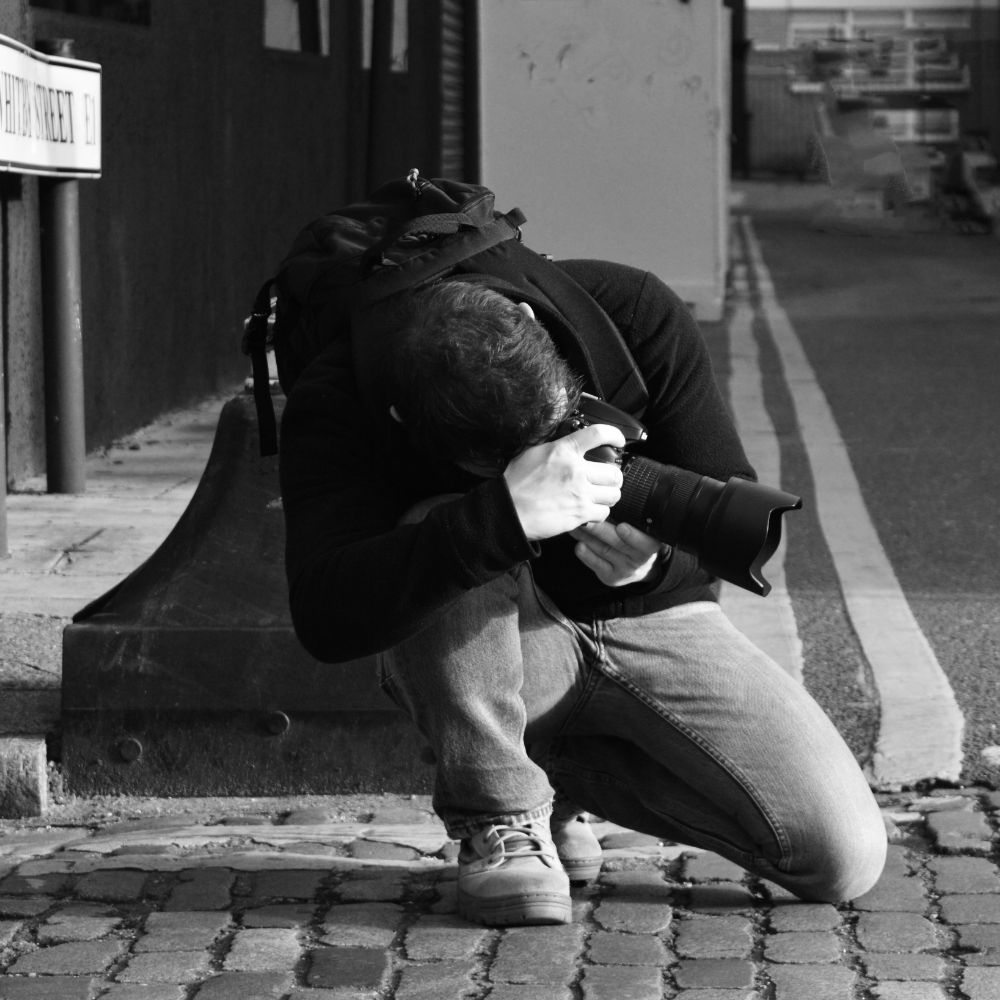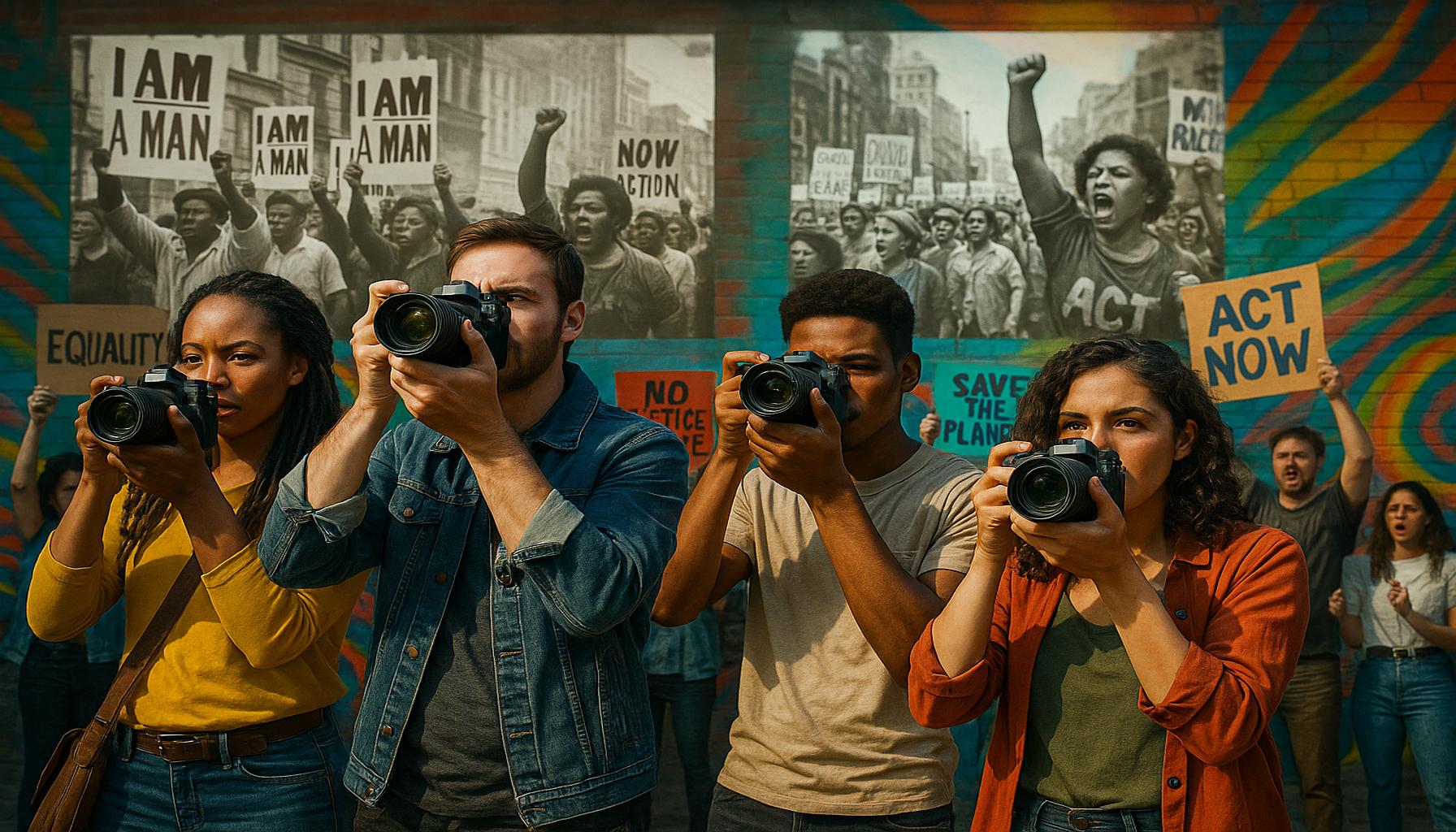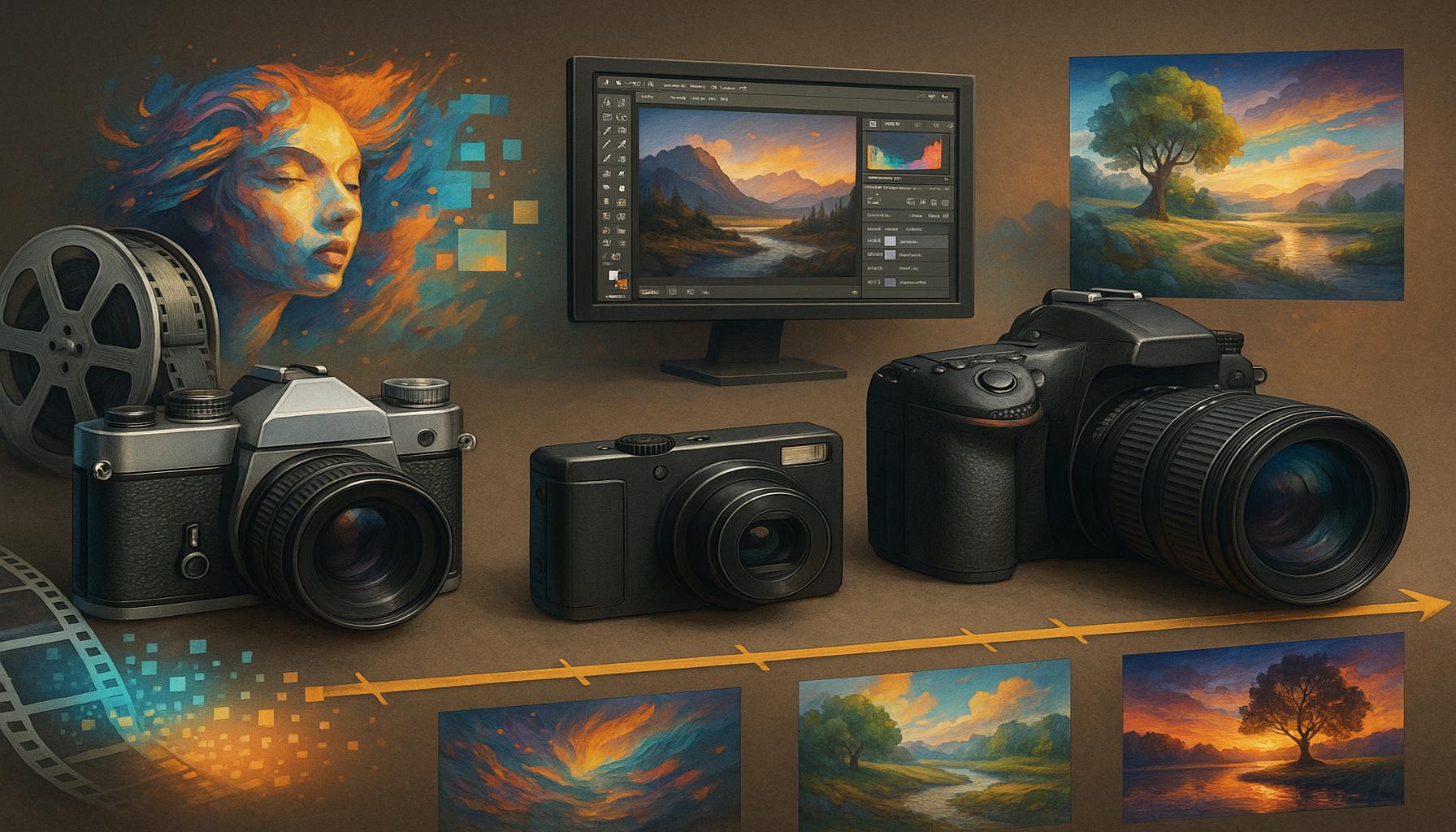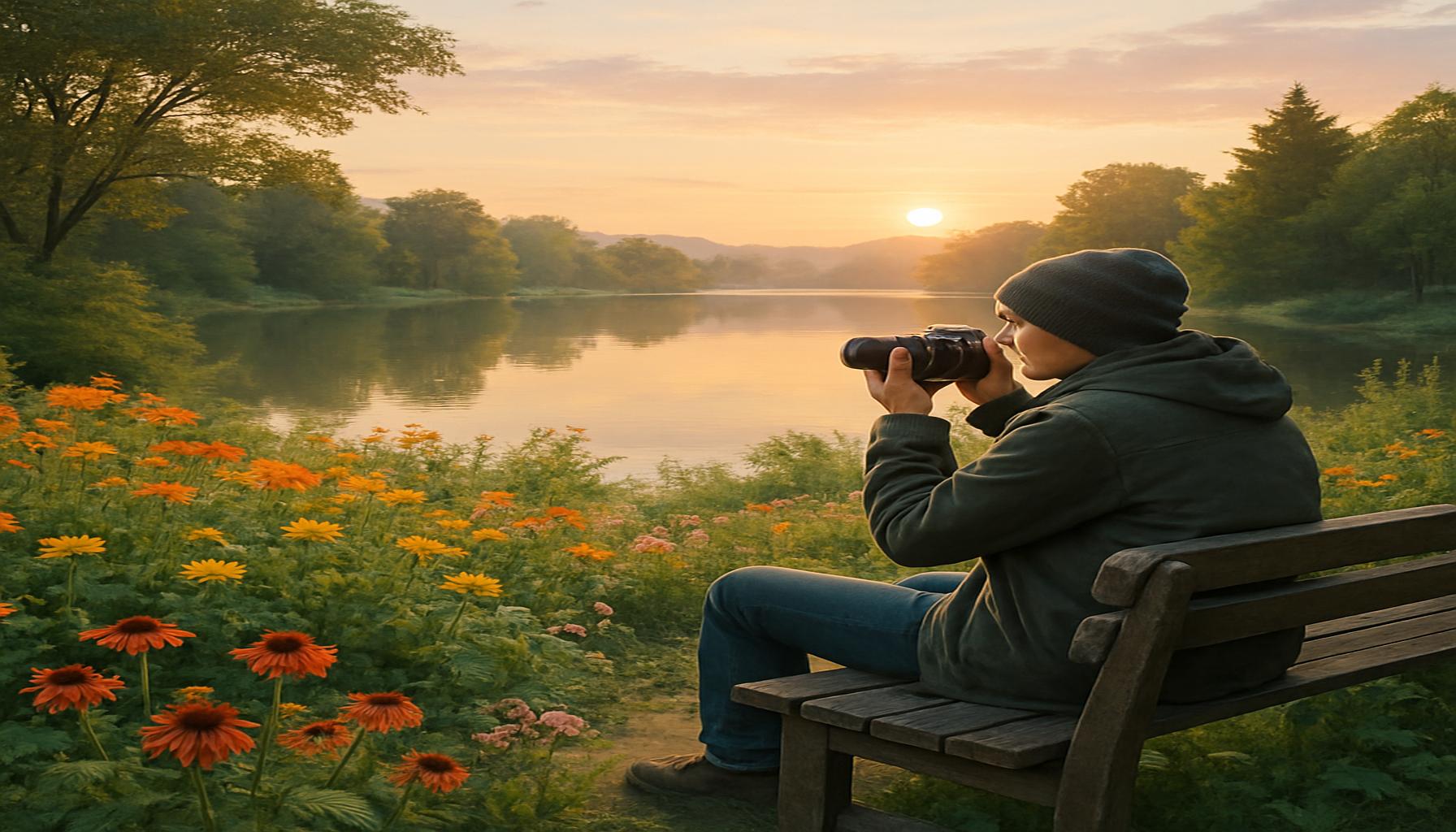Street Photography: Capturing Everyday Life and Cultural Diversity

The Art of Candid Captures
Street photography is a captivating genre that offers a window into the daily lives of people across the globe. This art form captures spontaneous moments, revealing the beauty and complexity of urban environments. With each click of the shutter, photographers document the richness of cultural diversity inherent in bustling streets. The allure lies not only in the images themselves but also in the stories they tell, often reflecting the spirit of a community or a moment in time.
What makes street photography so compelling? Consider these essential features:
- Realism: It portrays unfiltered moments, showcasing genuine emotions. For instance, capturing the laughter of children playing or the contemplative expressions of commuters waiting for the bus emphasizes the raw, unembellished human experience.
- Diversity: It highlights various cultures, lifestyles, and backgrounds coexisting in a single frame. In a city like Los Angeles, one can find street vendors from different countries, artists showcasing their crafts, and families enjoying local parks, all converging in a vibrant urban symphony.
- Storytelling: Each image tells a story, giving viewers insight into the everyday experiences of others. A single photograph can encapsulate a poignant moment of connection, such as a stranger helping someone in need, stirring emotions and prompting reflection on broader societal issues.
In the United States, street photography plays a critical role in reflecting the country’s vibrancy. From the crowded streets of New York City, where a myriad of cultures collide at the intersections of Manhattan, to the serene alleyways of Charleston, South Carolina, where history and modern life seamlessly coexist, photographers celebrate the unique tapestry of life. Each city has its own story; for instance, the murals of Philadelphia speak to the city’s rich history of art and activism while providing a narrative of resilience and community pride.
This genre extends beyond art—it invites discussions on social issues, such as urban poverty, migration, and the changing landscape of American cities. Photographers often find themselves at the crossroads of art and activism, using their work to spark dialogues about the interconnectedness of communities. For example, the street photography movement has been increasingly pivotal in shedding light on the experiences of marginalized groups, empowering voices that have long been overlooked in mainstream narratives.
As we delve deeper into the world of street photography, we uncover not only the aesthetics of capturing moments but also the profound narratives that enrich our understanding of cultural diversity. This exploration sparks curiosity and ignites a passion for seeing the world through a different lens. Photographers become chroniclers of the human condition, reminding us that every face in the crowd has a story worth telling. Engaging with street photography encourages one to appreciate the beauty in the mundane and recognize the significance of shared experiences in the urban landscape.

DIVE DEEPER: Click here to uncover the evolution of photography
The Dynamics of Urban Environments
Street photography thrives in the heart of dynamic urban landscapes, where the rhythm of life pulsates through the streets. The settings of bustling metropolises—think New York City, San Francisco, or Chicago—serve as rich backdrops that are constantly evolving. As photographers roam these streets, they not only capture individual moments but also the very essence of cultural diversity that thrives within them. Each corner turned reveals a new tableau: artists painting murals, food vendors dishing out culinary favorites, and families enjoying their leisure time amidst the bustling atmosphere. These scenes are a testament to the mosaic of cultures interwoven in American cities.
One of the most fascinating aspects of street photography is its ability to transcend language barriers. A single image can convey myriad emotions, values, and traditions, reflecting the unique stories of the communities it represents. Consider the following elements that make street photography essential in portraying cultural diversity:
- Spontaneity: Unlike staged photography, street photography thrives on the unexpected, capturing moments that reveal the raw experiences of daily life. This can be as simple as a skateboarder gliding past a mural or a group of friends sharing a laugh over coffee.
- Interactions: The relationships among various community members can show how cultural narratives are shared and celebrated. Capturing individuals from different backgrounds engaged in conversation or sharing experiences provides a powerful visual narrative that breaks down barriers.
- Local Culture: Each city has its own unique atmosphere shaped by its history and communities. Photographers can showcase everything from the energetic performances of street musicians in New Orleans to the multicultural festivals in San Jose, highlighting the local culture that permeates the streets.
The significance of street photography goes beyond aesthetics; it serves as an invaluable historical document. Photographers become visual historians, recording changes in society, urban development, and the effects of socio-economic factors impacting city life. For example, the evolution of neighborhoods in cities like Detroit, now a focal point for revitalization, can be chronicled through powerful street imagery that tells both stories of struggle and hope.
Moreover, as social media platforms proliferate, street photography has found new channels for dissemination and interaction. Photographers now engage with their audiences immediately, encouraging a global conversation about the cultural nuances present in everyday life. With hashtags like #StreetPhotography and #CandidMoments gaining traction, images circulate rapidly, allowing viewers around the world to partake in and appreciate the beauty of diverse communities captured candidly in these frames.
As we explore the layers of narratives behind street photography, it becomes evident that this genre is a celebration of humanity. The urban landscape serves as a canvas where various cultures coexist, inviting both the photographer and the viewer to reflect on their shared experience. Every photograph invites us to step into someone’s shoes, offering a glimpse into lives not our own and reminding us of the beauty in the diversity that surrounds us.
Street photography is an evocative genre that thrives on the intersection of human experiences, emotions, and the environments that mold our daily lives. This compelling form of visual storytelling allows photographers to delve into the hearts of communities, capturing moments that reflect cultural diversity in spectacular ways. The beauty of street photography lies not only in its spontaneous nature but also in its ability to provide a window into the life of every individual and the society they belong to.In the world of street photography, every click of the shutter tells a distinguishable story. It serves as a powerful medium for social commentary, highlighting issues related to urbanization, migration, and cultural intersections. Photographers often find themselves in bustling markets, serene parks, or crowded city streets, waiting to seize the right moment when life intersects with art. This genre encourages a deep engagement with the environment and fosters a greater appreciation for the narratives that unfold in everyday life.Moreover, street photography offers a unique platform to showcase the rich tapestry of cultural diversity. By focusing on the local people and their everyday activities, photographers can illuminate diverse traditions, fashion styles, and social practices that might otherwise remain unnoticed. Photographs encapsulating multicultural interactions can open dialogues about race, class, and identity, prompting viewers to reflect on their own societal context while appreciating the vibrancy of other cultures.Innovative use of light, shadows, and urban landscapes in street photography provides a stark contrast to staged portraiture. The raw, unfiltered quality of candid shots evokes emotions that resonate with viewers, encouraging empathy and understanding across different backgrounds. This authenticity engenders a sense of connection, inviting viewers into a shared human experience that transcends geographical borders.For those interested in immersing themselves in the art of street photography, understanding the technical aspects—such as composition, lighting, and timing—can dramatically elevate their skills. Effectively wielding a camera in busy urban settings necessitates keen observation and rapid decision-making, making it imperative for aspiring street photographers to practice actively.As social media platforms thrive on visual content, street photography has found a new audience, giving aspiring artists the ability to showcase their work globally. You may notice hashtags such as #StreetPhotography, #EverydayLife, and #CulturalDiversity gaining traction on these platforms, providing fertile ground for conversations about life’s intricacies. This widespread sharing not only enriches the artist’s visibility but fosters a community that appreciates the depth of street photography as an evolving art form that is continuously shaping the narratives of societal dynamics.In this thrilling genre, photographers aren’t just observers; they become storytellers weaving the intricate fabric of city life, capturing moments of profound beauty and cultural significance that might just go unnoticed. With each frame, they document and celebrate the diverse human experience, inviting us to see the world through a lens of curiosity and compassion. In order to clearly illustrate the multitude of advantages associated with street photography and its unique perspective on cultural diversity, the following table presents key categories and characteristics of this evocative genre.
| Category | Key Features |
|---|---|
| Cultural Representation | Captures real-life interactions reflecting diverse cultures. |
| Authenticity | Provides unfiltered insights into everyday experiences. |
DISCOVER MORE: Click here to dive into watercolor techniques
The Power of Storytelling Through Imagery
At its core, street photography is a profound form of storytelling, where every snapshot weaves a narrative of life, culture, and the human experience. Photographers who embrace this genre often become storytellers who capture not just what is seen, but also the emotional weight of the moment. Each photograph acts as a conduit for sharing individual stories, thereby highlighting the interconnectedness of diverse cultures in urban environments.
The Role of Light and Composition plays a crucial role in elevating the impact of street photography. Understanding the interplay of natural light, shadows, and urban architecture allows photographers to create visually compelling images that draw viewers in. Low-light conditions during twilight, known as the “golden hour,” often yield dramatic contrasts that emphasize the vibrancy of city life. The skillful use of composition can transform an ordinary street scene into a captivating visual puzzle, encouraging viewers to interpret the layers of meaning and cultural nuances present in each frame.
Moreover, street photography frequently highlights the ongoing dialogue between tradition and modernity. In cities like San Francisco, one can witness the merging of tech culture with historical significance. A street photographer may capture the contrast of a tech entrepreneur in sneakers and a hoodie next to a musician playing classical tunes, illustrating the coexistence of innovative capitalism and time-honored artistry. This interplay not only documents societal shifts but also celebrates the unique stories that unfold when different worlds collide.
One of the most powerful aspects of street photography lies in its ability to expose social issues—be it homelessness, inequality, or cultural clashes. For instance, photographers have been pivotal in bringing visibility to the struggles faced by marginalized communities in places like Los Angeles. By skillfully framing their subjects, photographers can evoke empathy and provoke thought about the complexities of urban life. Advocacy-focused street photography raises awareness about social justice issues and fosters conversations that bridge gaps between communities.
- Documenting Change: The transient nature of urban life means that what is captured today may not be here tomorrow. Street photographers often document gentrification, urban decay, or revitalization efforts, providing vital records of societal change for future generations.
- Cultural Festivals: Major events such as San Francisco’s Lunar New Year Parade or Detroit’s African World Festival offer a rich tapestry of cultural expression, allowing photographers to showcase the vibrancy of each community’s heritage. These images not only honor local traditions but also invite others to understand and celebrate cultural diversity.
- Inclusion and Representation: Street photography emphasizes the importance of inclusion by providing a platform for diverse voices. Capturing individuals from various backgrounds and lifestyles fosters a sense of belonging and representation in narratives often overlooked in mainstream media.
Through their lens, photographers not only capture light and shadow but also illuminate the rich narratives that define our shared spaces. Every click of the shutter serves as a bridge connecting the viewer to worlds they may never encounter, cultivating a deeper appreciation for the beauty of cultural diversity. As street photography continues to evolve, it remains an essential form of expression that portrays the authentic experiences and complexities of life flowing through the streets of America’s vibrant cities.
DIVE DEEPER: Click here to discover the evolution of digital art
Conclusion: The Lens of Everyday Life
In the tapestry of urban existence, street photography serves as a vital thread, connecting varied lives, cultures, and stories into a coherent narrative of everyday life. This genre transcends mere visual documentation; it evokes emotions and inspires conversations about the rich, diverse experiences that define our cities. Street photographers don’t just capture moments; they depict the soul of neighborhoods, the struggles of marginalized communities, and the beauty of cultural celebrations. Through their lenses, they shine a light on social issues, urging society to confront realities that often remain hidden in plain sight.
The interplay of light, composition, and subject matter enhances the power of these images, drawing viewers into complex visual stories. As the United States continues to be a melting pot of traditions and innovations, street photographers become crucial in portraying the dynamic blending of cultures. This ongoing dialogue between the past and present not only preserves local heritage but also invites an appreciation for the multifaceted nature of daily experiences.
As you explore street photography, consider how each photograph contributes to a larger narrative, inviting you to connect with stories and people you might otherwise overlook. The streets—whether in bustling cities or quiet towns—are rich with moments waiting to be discovered through the lens. By engaging with this art form, you become a part of the conversation around diversity and inclusion, joining in the celebration of the human experience that unfolds every day in vibrant urban landscapes.



